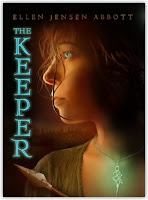We love to describe things as the holiday season approaches,
but too often we're stuck with the same bunch of adjectives that don't really
make us feel anything.
For example, you may love Grandma's apple pie, but how do
you describe it? “Yummy!”
How about those fancy lights outside? “Beautiful!”
See what I mean? All those words SOUND like they mean
something, but we don't truly see or taste what you do.
Let's think of some ways to really capture a moment, food,
sound, or image. Our goal when describing something is to make the other person
know EXACTLY what you mean, even though he wasn't there.
What's a great way to do this? By using our five senses! If
you rely on these, your reader will never wonder about what you really mean.
Here are some examples where we turn drab to fab. Notice how
the drab doesn't describe, while the fab gives examples on how to make the
details pop.
yummy -- creamy,
spicy, greasy, bits of apple dancing in my mouth
beautiful -- sparkling, multi-colored, glowing red and blue, reflecting in the snow, twinkling glass
loud -- crackling
fire, cackling children, ear-splitting violin playing,
leaves crunching under feet
You try some now. What word(s) do you use a lot? Amazing?
Cool? Awesome?
Try to rewrite some sentences to give us an idea of what things look, taste, smell, sound, and feel like.
Try to rewrite some sentences to give us an idea of what things look, taste, smell, sound, and feel like.
HAPPY THANKSGIVING!
- Margie






